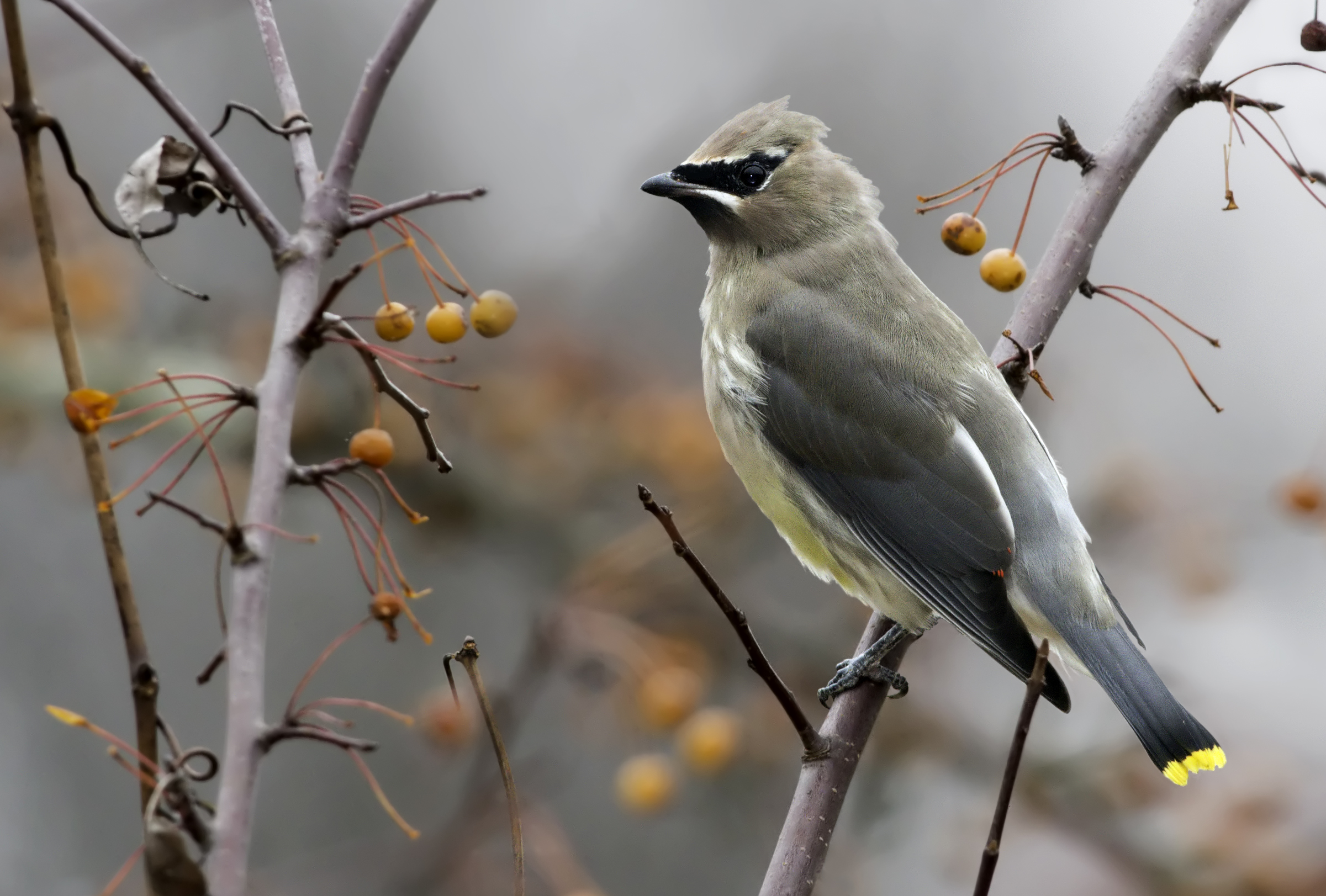This medium-sized marauder pillages from a variety of sources, all with one commonality: hackberries, winterberries, nannyberries, elderberries, black cherries, serviceberries, strawberries, raspberries, blackberries. Berries!
Of course, one of the most important berries in the diet of this bird is the juniper berry, from cedar trees. Cedar waxwings flock to these trees in winter. The two burly cedars in front of my house on Prairie Lane provide winter supplies to hungry waxwings and robins, but the tree also has its own interests at heart; juniper berries that have been ingested by waxwings germinate at a much higher rate than those that haven't passed through the bird, and 1.5-3.5 times as many of those seeds will germinate.
Cedar waxwing, photo by Kelly Colgan Azar
A frugivore, the diet of the cedar waxwing provides fascinating insight into seed dispersal and phenology. For instance, one study of waxwing diets analyzed their relationship with highbush cranberry, a native shrub. The red berries of this bush almost always remain on the bush through winter, and researchers supposed the waxwings consumed these fruits in April and May the next year because of higher sugar concentrations. However, when captive waxwings were given a choice between the fresher winter berries and next year's sugar-concentrated berries, the birds almost always chose the winter berries.
From this same research, observations in the field indicated that waxwings that consumed highbush cranberry in April or May complemented this meal with catkin pollen from cottonwood trees. In the lab, diets of cranberry or catkin alone caused the waxwings to lose mass, while a combination diet saw a gain in body mass. While the cranberry presents a rich source of carbohydrates, the cottonwood pollen offers high protein.
Highbush cranberry, photo by Barbara Gail Lewis, FCC
With a diet of only cranberry, waxwings saw nitrogen losses in their diets; secondary compounds in the cranberry make it very acidic, and in order to process this acidity waxwings had to catabolize protein to produce a bicarbonate buffer, according to researchers. The protein from the pollen offset these losses.
All of this is to say that the waxwings eat a well-balanced diet. While their dietary choices may seem like the whims of the flock, the menu of a cedar waxwing has important ecological implications for seed dispersal and for the bird's overall health.
In addition, berries amount to a sort of social currency in cedar waxwings. These birds exhibit delayed plumage maturation, where the tips of their secondaries turn a waxy red color. The length and vibrancy of this color is diet-related—waxwings consuming the invasive honeysuckle (with an orange berry) will develop orange tips. In a study of the reproductive success of waxwings, it was discovered that males and females with similar tips would mate. Those pairs with longer tips nested earlier and had larger broods and fledged more young than those pairs that were younger, with shorter waxy tips.
This is a bird that revolves around berries. From overall health to seed dispersal throughout the ecosystem to social status, berries make the bird, and the birds certainly help disperse the trees and shrubs that make the berries. You can find these interesting flocks at Faville Grove around any fruiting trees and shrubs.
Written by Drew Harry, Faville Grove Sanctuary land steward
Cover photo by Kelly Colgan Azar







